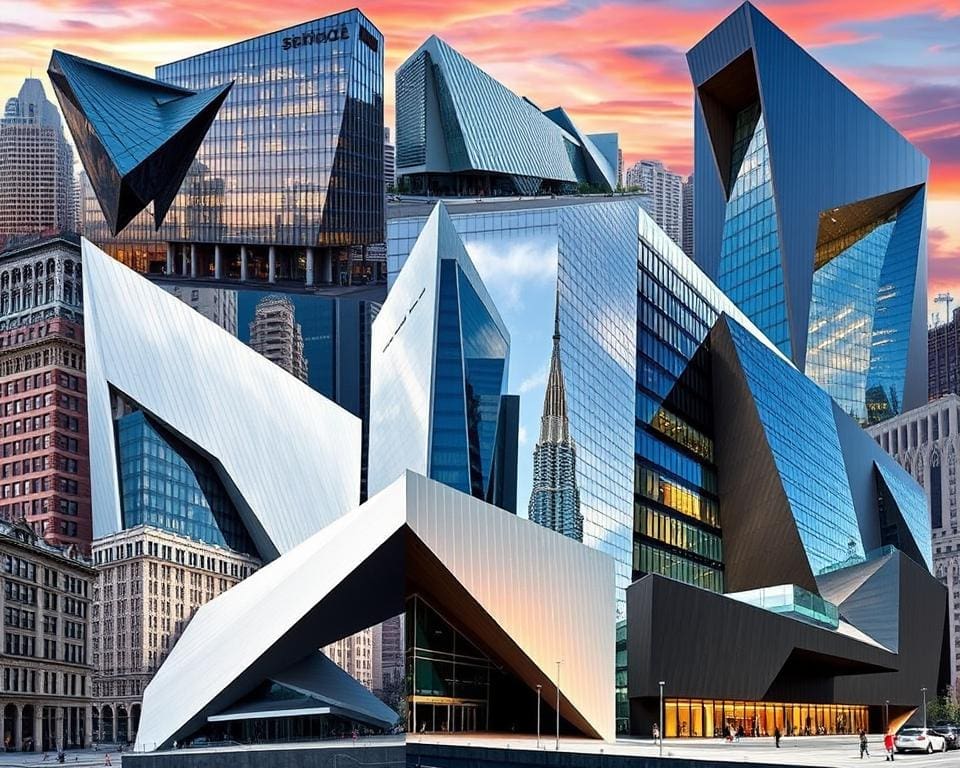Renowned for his visionary designs with a global impact, Daniel Libeskind has emerged as a transformative force in contemporary architecture. His unique approach resonates through urban landscapes and cultural institutions, where every structure reflects the stories of its environment. As an innovative architect, Libeskind challenges conventional boundaries, creating spaces that honour history while embracing the future. His work is not merely about erecting buildings; it is a passionate endeavour to craft landmarks that inspire communities worldwide.
The Life and Journey of Daniel Libeskind
Daniel Libeskind, a prominent figure in contemporary architecture, has a compelling biography shaped by a unique set of influences and experiences. His background, rooted in a post-war Poland, significantly contributes to the architectural inspirations that define his work today. The interplay between his early life, education, and architectural philosophy showcases the intricate relationship between personal identity and professional creativity.
Early Life and Influences
Born in 1946 in Łódź, Poland, Daniel Libeskind’s formative years unfolded amidst the remnants of World War II. The trauma of this historical period left an indelible mark on his worldview, infusing his designs with profound meaning. Growing up in a Jewish family, he absorbed cultural narratives that would later resonate throughout his work. Influences on Libeskind’s work include great architects like Louis Kahn and Frank Lloyd Wright, whose emphasis on narrative and symbolism inspired his innovative designs.
Education and Architectural Philosophies
Libeskind’s architecture education at institutions such as Cooper Union and the University of Essex laid the foundation for his architectural philosophy. His broad curriculum, encompassing architecture, art history, and music, nurtured a holistic understanding of built environments. Central to his Libeskind architectural philosophy is the belief that architecture must articulate historical and cultural narratives, transforming structures into meaningful connections between communities. The Jewish influence in architecture continues to guide his work, reflecting a sense of responsibility towards the spaces he creates.

Daniel Libeskind: Visionary Designs with a Global Impact
Daniel Libeskind’s work represents a beacon of transformative architecture, particularly within urban landscapes. His unique designs not only reshape the physical spaces but also invite contemplation and emotional connection. By addressing the complexities of memory and identity, Libeskind’s projects redefine how inhabitants interact with their environments, fostering a deeper understanding of the spaces they occupy.
Transformative Architecture for Urban Landscapes
Libeskind’s designs play a crucial role in the evolution of urban landscapes, often challenging conventional architectural norms. His projects, such as the Jewish Museum Berlin, exemplify a masterful blend of artistic expression and functionality. Each building tells a story, encouraging residents to reflect on their history while considering the future of their communities. Through this transformative architecture, Libeskind connects individuals with their surroundings, inspiring a sense of belonging and identity.
Cultural Context and Community Engagement
Central to Libeskind’s vision is his commitment to integrating cultural context in architecture. His creation process frequently involves extensive community engagement, allowing local narratives to influence architectural outcomes. Notable examples include the Contemporary Jewish Museum in San Francisco and the Imperial War Museum in London. These projects showcase how Libeskind’s designs resonate with the communities they serve, cultivating connections rooted in shared history and culture.
Iconic Landmarks and Architectural Masterpieces
Daniel Libeskind’s work is a compelling blend of form and meaning, with the Jewish Museum Berlin standing as a prime example of his visionary approach to design. This masterpiece has transformed perceptions of contemporary architecture and serves as a profound testament to the complexities of Jewish history in Germany.
The Jewish Museum Berlin: A Study in Form and Meaning
The Jewish Museum Berlin is celebrated for its distinctive zigzagging façade and atmospheric voids, which signify the absence and displacement experienced by Jewish people through history. More than just an architectural landmark, this building acts as a narrative space, encouraging visitors to explore the past through its innovative exhibits. The interplay of light and shadow within the structure enhances the emotional impact, turning the museum into not just a site of history but a space for reflection and engagement.
Other Notable Libeskind Projects Worldwide
Besides the Jewish Museum Berlin, Libeskind’s portfolio features numerous notable projects renowned globally. Key highlights include:
- Royal Ontario Museum’s Michael Lee-Chin Crystal in Toronto, Canada, known for its dramatic angles and layered glass façade.
- Denver Art Museum, which redefines conventional design through its provocative geometries.
- Imperial War Museum North in Manchester, embodying war’s scattered remnants through striking architectural form.
Each project showcases Libeskind’s iconic designs, reflecting his commitment to harmonising architectural beauty with narrative depth, ultimately enriching the landscape of contemporary architecture.
Innovative Structures and Sustainable Buildings
Daniel Libeskind has emerged as a pioneer in integrating sustainability into his architectural designs. His commitment to creating sustainable buildings reflects a broader vision that prioritises environmental stewardship while enhancing the quality of life for occupants. By employing innovative construction techniques, Libeskind illuminates the potential for architecture to tread lightly on the planet.
Integrating Sustainability into Design
Libeskind sustainable architecture often incorporates elements that minimise environmental impact. His approach focuses on utilising energy-efficient materials and sustainable practices. Projects such as the University of Pennsylvania’s Master Plan are notable for their emphasis on green roofs and public spaces, fostering a sense of community and connection to nature. These features not only contribute to urban sustainability but also enhance social interaction within the environment.
Technology and Modern Materials in Libeskind’s Work
Modern materials and technology in architecture play an essential role in Libeskind’s designs. His experimentation with glass and steel creates light-filled spaces that inspire human interaction and adapt seamlessly to their surroundings. Innovative structures, such as One World Trade Center, showcase how advanced modelling software and construction techniques enhance functionality while embodying significant cultural narratives. The fusion of artistry and technology results in masterpieces that are both visually striking and sustainable.
The Legacy of Daniel Libeskind in Contemporary Architecture
The legacy of Daniel Libeskind is profoundly etched into the fabric of contemporary architecture, characterised by his unique capacity to weave together narrative, memory, and innovative design. Each structure he creates serves as a dialogue between the built environment and its historical context, inviting viewers and occupants alike to engage deeply with their surroundings. His work encourages a fresh perspective on the role architecture plays within communities, fostering connections that transcend mere functionality.
Libeskind’s architectural influence resonates across continents, as cities increasingly confront the challenges of integrating historical narratives with modern demands. His designs not only stand as iconic landmarks but also as thought-provoking statements about the significance of place and memory in urban development. Through his visionary concepts, he has challenged architects to think more deeply about how buildings can reflect and enhance cultural identities.
As we look to the future of architecture, the contemporary architecture impact of Daniel Libeskind will undoubtedly inspire new generations of architects. His emphasis on creating spaces that honour cultural relevance while responding to modern necessities sets a benchmark for thoughtful design. The enduring nature of his contributions serves as a reminder of the powerful role architecture plays in shaping the human experience, ensuring that his legacy will remain vibrant in discussions about the built environment for years to come.









